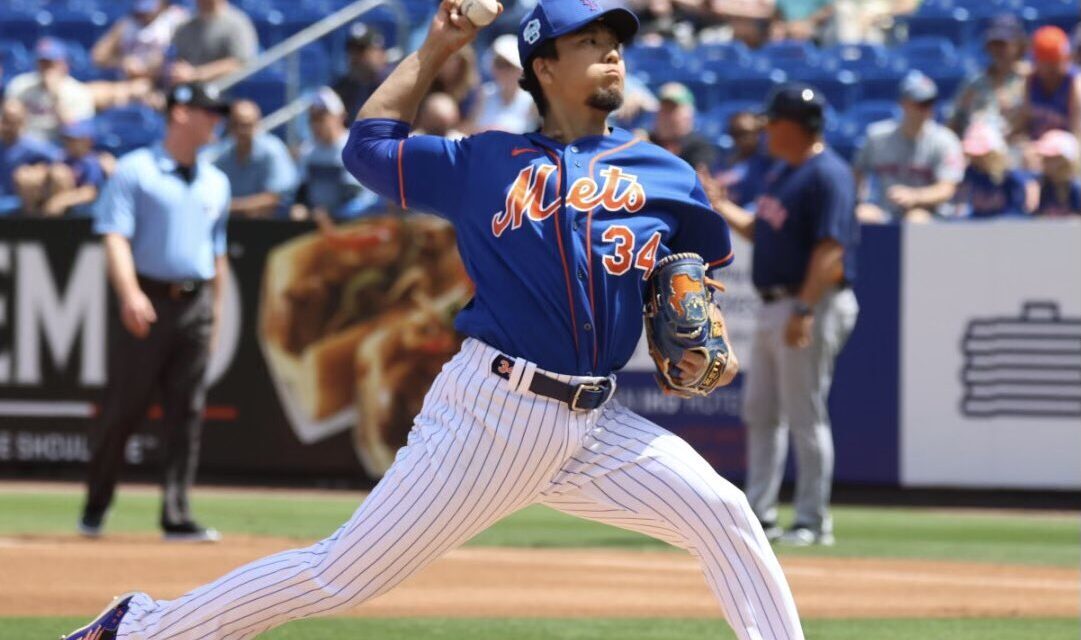
Photo by Ed Delany of Metsmerized
With Taijuan Walker and Chris Bassitt departing in free agency this offseason, the Mets will need Kodai Senga to be the pitcher everyone envisioned when he signed his five-year, $75 million contract to come to New York. The Japanese right-hander has lived up to the hype through his first three spring starts.
Senga took the mound on Wednesday against the Houston Astros, but he was still not throwing his signature ghost fork due to the tendinitis in his right index finger. Even without his best putaway pitch, Senga threw four strong innings in the Mets’ 5-2 loss.
Although his final line does not do justice to how well he pitched (4+ IP, 2 H, 2 R, 3 BB, 3 K,) Senga was terrific through his first four innings of work. Despite throwing just one ghost fork in the outing, he generated six swings and misses including four on just six swings at his sweeper. Senga’s fastball was consistently in the upper 90’s and topped out at 98.7 mph. When he went away from the heat, he focused on the aforementioned sweeper and his cutter.
Senga told reporters after the game that he was staying away from using his ghost fork right now as adjusts to the major league ball and bounces back from finger tendinitis. “Whatever I can do to be at 100% for [the season]. It’s not like I can’t throw the splitter. I can definitely throw it like I did in earlier outings. It’s just an adjustment period for me,” Senga said.
After throwing four scoreless innings on just 46 pitches, Senga took the mound for the fifth inning for the first time this spring and walked two batters before being pulled. Those two batters would come around to score against Jimmy Yacabonis, raising Senga’s spring ERA from 2.00 to 4.00.
In nine innings this spring, Senga has allowed a total of four runs on six hits and five walks while striking out 10 batters. Of those five walks, two were the first two batters he faced in his first game action in MLB, and two were his final two batters of Wednesday’s outing. Five walks in nine innings seems like a high number, but given the context of when those walks came, it would be unfair to say Senga has had trouble with free passes.
The overall numbers for Senga have been solid this spring. The fact that he is doing it without using a putaway pitch that has been so highly regarded is an encouraging sign. The Mets certainly took a risk when they turned to Senga after losing two proven and reliable MLB starters in Walker and Bassitt. While he is much more of an unknown being in his first year in MLB, Senga’s ceiling could make the move by the Mets worthwhile.
If Senga can build on his strong spring with his signature pitch back in his arsenal, the Mets could potentially have MLB’s best trio of starting pitchers with him behind Max Scherzer and Justin Verlander.
















